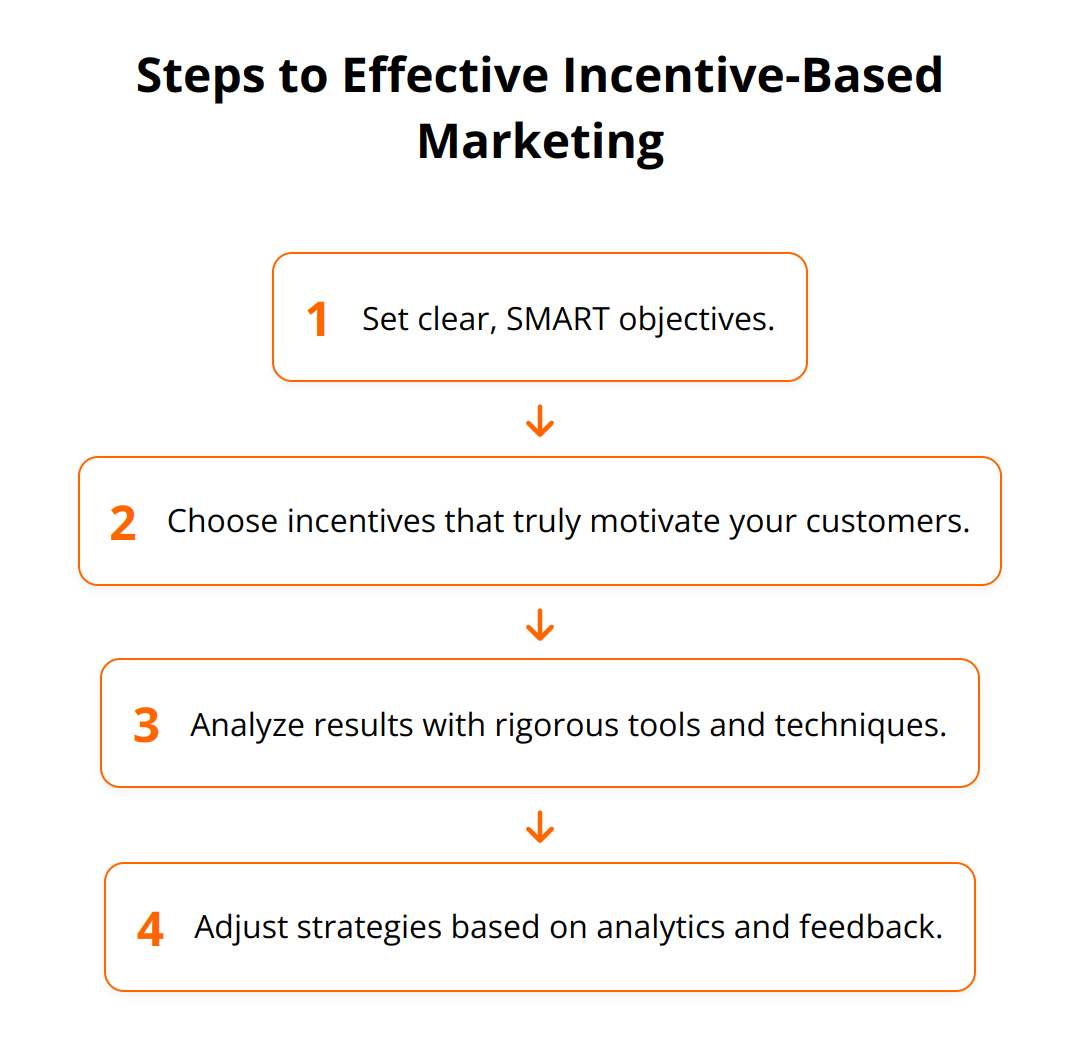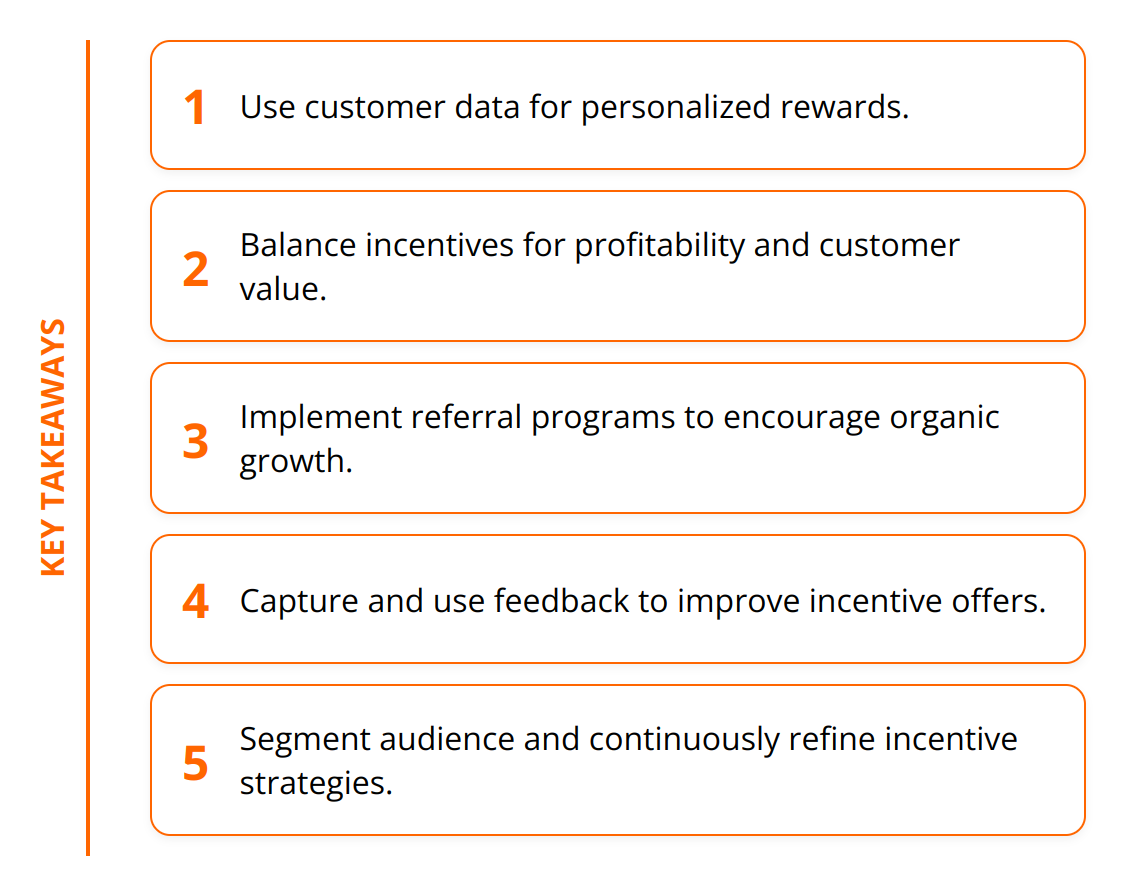
In the competitive landscape businesses operate in today, staying ahead means adopting strategies that not only attract but also retain customers. We at Reward the World believe that incentive-based marketing stands out as a transformative approach for businesses aiming for significant growth. It nurtures customer loyalty, boosts sales, and fuels word-of-mouth recommendations. Crafting and implementing a successful incentive strategy can elevate a brand’s market position and strengthen its customer relationships.
How Incentive Marketing Transforms Business
Incentive-based marketing isn’t just a temporary trend; it’s a powerful tool that fundamentally changes how businesses connect with their customers. Utilizing incentives effectively leads to remarkable improvements in customer loyalty, sales, and organic marketing efforts. When customers feel valued and rewarded, they’re more likely to stick around and even advocate for your brand. However, achieving these results requires understanding and implementing strategies that resonate with your target audience.

Turning Customers into Loyal Advocates
The first game-changer with incentive marketing is its ability to convert casual customers into loyal advocates. It’s not just about providing a service or product; it’s about creating an experience that customers want to return to. A key strategy here is personalization. Tailoring rewards and incentives to match customer preferences shows that a business understands and values its customers’ unique needs. This attention to detail makes customers feel special and appreciated, significantly increasing their likelihood of staying loyal. Detailed analytics insights on customer preferences are invaluable in this strategy, for which practical implementations can be seen in various successful loyalty programs. Loyalty rewards insights can offer deeper understanding into creating programs that resonate with audiences.
Driving Sales Through Strategic Incentives
Incentives directly impact a business’s bottom line by boosting sales. Discount codes, limited-time offers, and rewards for repeat purchases can motivate both new and existing customers to buy more. The trick is to strike the right balance between offering value to the customer and maintaining profitability. Flash sales and exclusive offers create a sense of urgency, encouraging customers to act quickly. These strategies should be data-driven, relying on customer purchase history and preferences to tailor offers effectively.
Leveraging Word-of-Mouth Marketing
Perhaps one of the most valuable outcomes of incentive-based marketing is the organic word-of-mouth promotion it generates. Satisfied customers are more likely to share their positive experiences with friends and family, acting as brand ambassadors. Encouraging this natural advocacy through referral incentives not only broadens your reach but also lends credibility to your brand through personal recommendations. This form of marketing is incredibly cost-effective, as it relies on the genuine enthusiasm of your customer base.

Actionable Tips for Successful Incentive-Based Marketing
- Personalize rewards: Use customer data to offer personalized rewards, making each customer feel valued.
- Balance offers: Ensure incentives offer real value to customers while keeping an eye on profitability.
- Encourage referrals: Implement referral programs that reward both the referrer and the new customer to boost organic growth.
- Capture feedback: Use customer feedback on incentives to refine and improve future offers.
By focusing on these areas, businesses can significantly benefit from the transformational power of incentive-based marketing. It’s a strategy that not only increases sales and customer loyalty but also strengthens brand reputation through word-of-mouth marketing.
Implementing Effective Strategies
Implementing incentive-based marketing strategies effectively requires precision, creativity, and a strong grasp of your target market’s preferences. A well-executed plan can transform customer engagement and foster unparalleled loyalty. The key lies in setting clear objectives, choosing motivating incentives, and meticulously analyzing the results to refine future campaigns.
Objectives Are Your Compass
Understanding your end goal is paramount. Are you aiming to increase short-term sales, boost customer retention, or encourage referrals? Perhaps your aim is multi-faceted. Identifying these objectives early on guides your strategy, helping ensure every action is purposeful and measurable. Objectives should be specific, measurable, attainable, relevant, and time-bound (SMART). For example, increasing customer retention by 10% within six months is a SMART objective.

The Art of Selecting Incentives
The core of any incentive-based strategy is, unsurprisingly, the incentive itself. This demands more than a scattergun approach; it requires understanding what genuinely motivates your customers. Successful incentives often go beyond monetary savings. Exclusive access, special member events, or personalized products can offer unique value that cash discounts simply can’t match. However, the choice of incentive should align with your business model and be sustainable in the long term. A deep dive into customer preferences can unearth insights into what incentives will be most effective.
Measuring Success and Adjusting Course
The only way to truly grasp the impact of your incentive-based marketing efforts is through rigorous analysis. Sales data, customer feedback, and engagement metrics can reveal a wealth of information about what’s working and what’s not. Tools and software that provide in-depth analytics are indispensable in this regard. They can help track customer behavior, measure campaign effectiveness, and provide data-driven insights for future strategies. Consider setting up regular review cycles to assess the performance against your objectives and adjust your approach as needed.

Practical Tips for Success
- Segment your audience: Different customer segments may respond to different types of incentives.
- Test and learn: Use A/B testing to find out which incentives resonate best with your audience.
- Keep it fresh: Regularly update your incentives to keep your customers engaged and interested.
- Solicit feedback: Direct customer feedback can provide valuable insights into how your incentives are being received and what could be improved.
In sum, the successful implementation of incentive-based marketing strategies hinges on a deep understanding of your objectives and audience, paired with a willingness to continuously learn and adapt.
Successful Incentive Marketing Examples
In the world of business, seeing is believing. That’s why examining real-world examples of successful incentive-based marketing provides invaluable insights. Here’s how three diverse sectors harnessed the power of incentives to drive tangible results.
Retail Sector Success Story: Starbucks Rewards Program
Starbucks represents a premier example of how retail businesses can leverage incentive-based marketing for astronomical growth. The Starbucks Rewards program significantly boosted their sales and customer engagement by offering free drinks, custom offers, and the ability to order and pay through their app. What set Starbucks apart was their strategic use of personalized rewards that catered to individual customer preferences, leading to an increase in repeat visits and higher average spend per visit. Starbucks’s commitment to understanding and rewarding their customers’ unique preferences has made their rewards program a benchmark in retail incentive marketing.

Key takeaways:
- Personalization enhances customer loyalty.
- Seamless integration with digital platforms increases convenience and usage.
Service Industry Achievement: Delta SkyMiles Program
Delta Airlines’ SkyMiles Program demonstrates the service industry’s capacity to adopt incentive marketing with impressive outcomes. The program offers points based on the price of flights, which can be redeemed for free flights, upgrades, and more. This strategy not only incentivizes purchases but also fosters long-term loyalty by rewarding frequent flyers with increasingly valuable perks. Delta’s commitment to providing tangible value through its rewards program has not only enhanced customer retention but also positioned it as a leader in customer loyalty within the airline industry.
Key takeaways:
- Rewards tied to customer spending increase brand loyalty.
- Offering a tiered reward system encourages more frequent engagement.
E-commerce Platform Growth: Amazon Prime
Amazon Prime is a quintessential example of how e-commerce platforms can drive growth through incentive-based marketing. For a yearly fee, Prime members receive free two-day shipping, access to streaming services, and exclusive deals. This program incentivizes purchases by adding exceptional value beyond the products themselves, leading to increased customer retention and higher average spending. Amazon Prime’s success lies in its ability to offer a comprehensive package of benefits that are both relevant and valuable to its wide customer base, proving that well-crafted incentives can significantly boost e-commerce success.
Key takeaways:
- Comprehensive benefits package promotes customer retention.
- Exclusive access to services increases perceived value.
In summary, these examples from the retail, service, and e-commerce sectors showcase the undeniable impact of effectively implemented incentive-based marketing strategies. Each case points to the importance of understanding your audience and crafting incentives that provide real value. By focusing on personalization, customer spending, and offering comprehensive benefits, businesses can achieve remarkable growth and customer loyalty.
For businesses looking to implement or refine their incentive-based marketing strategies, it’s essential to draw lessons from these successful examples. Remember, the key to incentive marketing is not just offering rewards, but offering the right rewards that resonate with your target audience and align with your business objectives.
- Focus on creating value for the customer through your incentives.
- Ensure your incentive program is easy to understand and use.
- Regularly analyze and adjust your strategy based on customer feedback and data.
By taking these steps, businesses can craft impactful incentive programs that not only attract but also retain a loyal customer base.
Final Thoughts
Incentive-based marketing has proven itself as a formidable strategy for businesses aiming to drive growth, foster customer loyalty, and maximize sales. Through the power of personalized rewards, strategic incentives, and leveraging word-of-mouth, companies can transform casual customers into brand advocates, ultimately boosting their bottom line. The examples of Starbucks, Delta, and Amazon Prime illustrate the diverse and impactful ways incentives can be utilized across different sectors for significant results.

The journey towards implementing an effective incentive-based strategy requires a deep understanding of your target audience, a clear set of objectives, and a commitment to continuously refining your approach based on data and feedback. By focusing on creating real value for customers and making your incentives program easy to understand and use, you can unlock the full potential of this dynamic marketing approach.
At Reward the World, we’re dedicated to helping businesses harness the transformative power of incentives. Our globally available, multilingual platform supports a diverse array of rewards that cater to all demographics, making it easier for companies to engage their customers and employees effectively. With our robust analytics, GDPR compliance, and seamless integration features, we provide a comprehensive solution that’s not only cost-effective but also designed for maximum impact.
For businesses looking to elevate their marketing strategy and build a more loyal customer base, exploring incentive-based solutions is a step towards achieving remarkable success. By aligning business objectives with the needs and preferences of your audience, you can craft an incentive program that resonates deeply with customers and drives enduring loyalty and growth. We hope you found this article: Why Incentive-Based Marketing Is a Game Changer for Businesses, useful..
